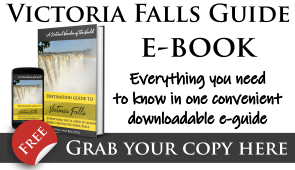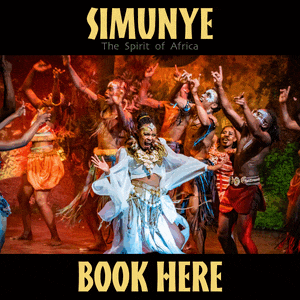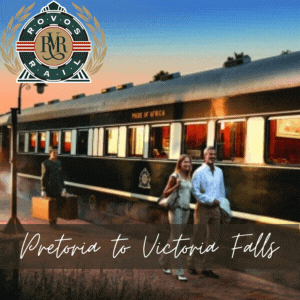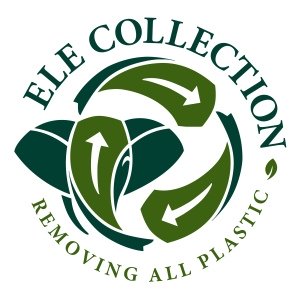Geography of BotswanaMore than half covered by the fifth largest desert in the world, and home to one of the world's largest inland deltas, the Botswana's geography makes for a unique ecosystem
Botswana is one of Africa's landlocked countries, located in the south-west part of the continent. It is surrounded by four countries - Namibia to the west and north, South Africa to the south, Zimbabwe to the east, and shares a tiny section of its borders (about 156 metres or 171 yards) with Zambia in the northeast. 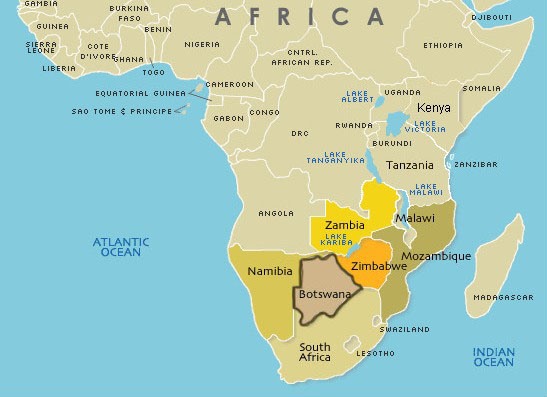 Map showing the location of Botswana in Southern Africa Geography of BotswanaThe nation of Botswana covers 581 730 square kilometres (224 610 square miles) - an area larger than California, but smaller than Texas; larger than France but smaller than Ukraine. It is the 48th largest country in the world, area-wise. Botswana's TopographyBotswana is mostly flat with a few hills, most of its highest points located along the south-east section of the country (the eastern edge of the Kalahari Basin). 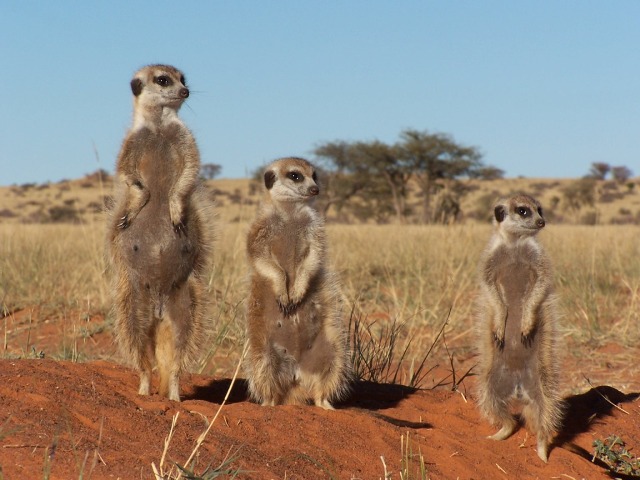 Meerkats in the Kalahari The semi-arid Kalahari Desert covers about 70% of Botswana's surface. While its does receive about 500 millimetres in the wettest parts per annum, the Kalahari is considered a desert because it has vast surface area covered with sand. It is home to plants and animals, mostly different types of acacia trees, animals like lion, cheetah, leopard, hyena, antelopes, meerkats, as well as many birds species and reptiles. It is also home to the San people, some Tswana, Kgalakgadi, and Herero people. In the north is the seasonal Okavango Delta which is one of the world's largest inland deltas. It spans about 15 000 square kilometres and is relatively flat. What makes the Okavango a big tourist attraction is the inhabitants of the area, both seasonal and permanent. The different species found in the area include lions, leopards, cheetahs, giraffe, crocodiles, sable antelope, springbok, lechwe, buffalo, zebra, wildebeest, and so much more, plus over 400 species of birds. 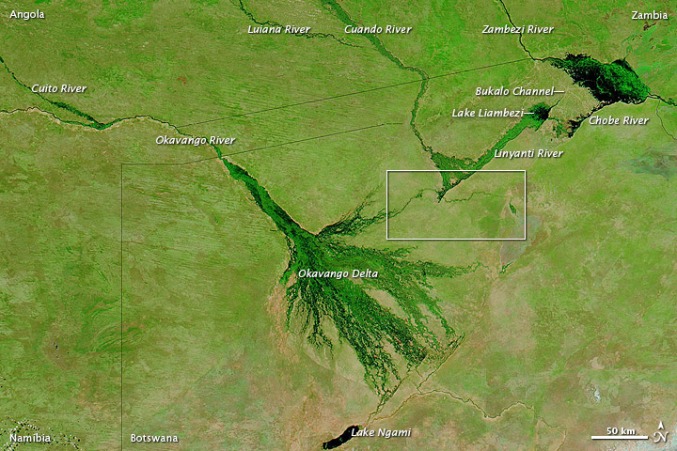 The Okavango Delta as seen from above (NASA) The Makgadikgadi Pans are a large collection of salt pans surrounded by the Kalahari sands. They are part of ancient geography of Botswana. The area is thought to have once been a lake which dried up thousands of years ago. The Makgadikgadi Pans are located in the north-west section of Botswana. Wildlife found in this area is mostly seasonal. During the dry spells, the only life forms that live there are ostriches and a few smaller birds. After the rains, migratory birds and animals flock to the pans - zebra, wildebeest, pelicans, flamingos, etc. 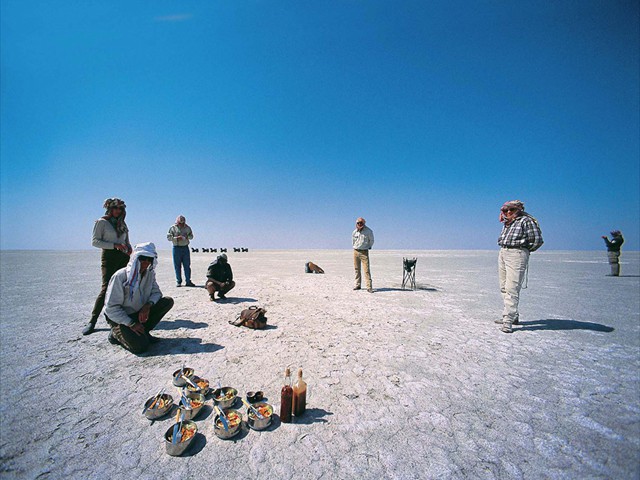 Salt Pans of Makgadikgadi area in Botswana Chobe National Park is in the north near the section where four countries meet - Botswana, Namibia, Zimbabwe and Zambia. This is the same place where the Chobe River meets the Zambezi River. The national park is a unique area with four different ecosystems that attracts a unique variety of wildlife. The Chobe Riverfront is ideal for visitors who also want to visit the Victoria Falls area which is about an hour's drive from Kasane town. 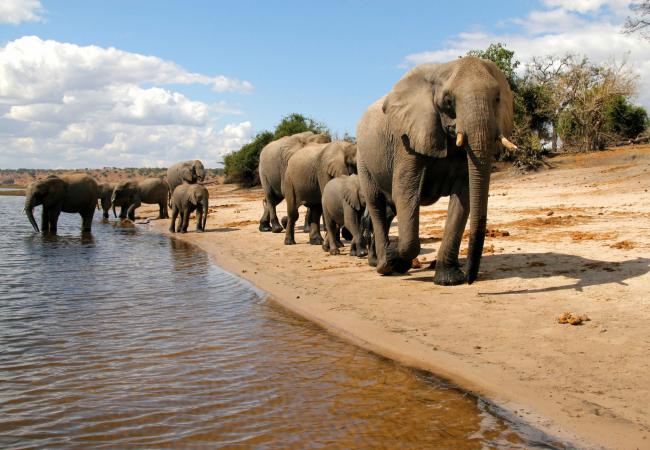 Elephants by the Chobe River In the south, part of the Limpopo River basin lies within Botswana. One of its tributaries, the Notwane River, supplies water to the capital city of Gaborone. In the north, the Chobe river meets with the Zambezi River where Botswana meets Namibia, Zambia, and Zimbabwe. Below is the Botswana section on Google Maps -
Return from Geography of Botswana page to our home page |
|
||
|
|
|||
|
|
|||
|
| |||
